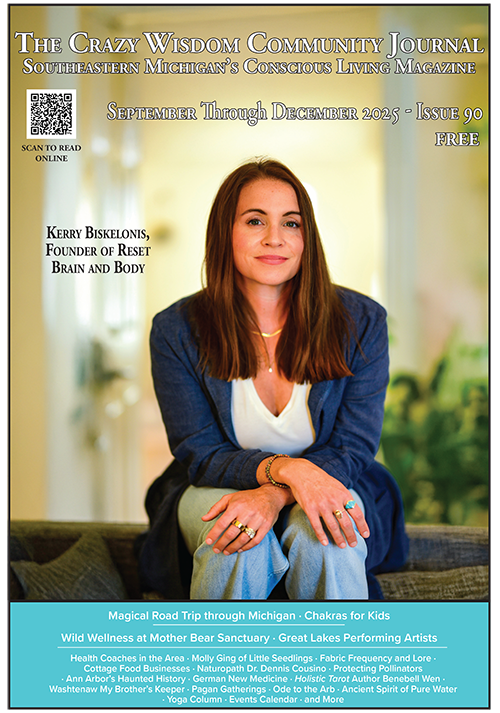By Mary F. Spence, PhD
As I’ve mentioned, I like to wonder. So I wonder about why we find ourselves so depressed, so anxious, and so overwhelmed by life. Why, in recent times, has the US rate of drug and alcohol use outstripped other developed countries, despite our War on Drugs policies? What factors are associated with the 61 percent increase in prescription drug use during the past decade, resulting in sales of 3.4 billion annually? So, grab a cup of tea and consider how this complex public health problem came to be and what we might do to make it different — if we’re willing to take a long view and broader perspective.
We know that life changes dramatically over the course of our existence. As life evolves, both our well-being and survival are often predicated on the ability to open ourselves up to novel circumstances. We must also shift our habitual patterns in order to cope with situations that are unpleasant. Sometimes these unpleasant situations can involve considerable suffering.
Personal growth and resilience are essential to our life long happiness.
That said, humans have also sought to alter their experience on purpose since time immemorial. We seem to have an inherent need to alter our states of consciousness. While there is a multitude of ways to do this, the use of substances has long been a favored method. Use can lead to quick and powerful changes in your state of consciousness and it is usually easy and accessible, often with little effort. All cultures report drug use and a subset of the population who struggles with regulating their personal use — a phenomenon we have come to understand as addiction.
Fast forward to 2016. Adolescent drug use has been significantly impacted by large-scale societal changes in overall drug use. One salient factor is the increased use and abuse of prescription medications. Adolescents have not been untouched by the cultural shift to use drugs/medications to regulate mood, focus attention, and alleviate pain. Many more children and youth are being treated with medications, with adolescent antipsychotic drug use nearly tripling over the last 10 to 15 years. Approximately 6 percent of adolescents are taking psychoactive medication prescribed by well-meaning doctors in response to worried-sick parents. Don’t get me wrong — medications can be of considerable benefit for those with bona fide mental health disorders receiving competent care; however, the increased abuse of prescription medications, suggests that our tendency to think that drugs — illegal or otherwise — will fix every and all difficulties that we are asked to cope with has a definite down side.
While there are many benefits to having more youth receiving mental health treatment for diagnosable disorders, this has led to the greater availability of psychoactive medications to a segment of the population that is rife for experimentation. Sensation seeking is highest during this developmental period, which has always driven a fascination with drug and alcohol experimentation and interfaces with this burgeoning public health problem. A number of prescriptions that are written are being used for purposes of numbing out or getting high.
Surveys find that the majority of adolescents in fact do experiment with substances by 12th grade. What might start out as fun times seeking novel and intense experience with friends or the use of prescribed medication under doctor’s care may transition into a reliance on using a substance for relief from the significant stress that adolescents regularly are confronted with. When life is difficult, adults and youth alike often look to drugs as a solution. For adolescents, who are still developing their coping skill sets while confronting more adult level problems for the first time, this is particularly worrisome.
Of great concern, is the opioid prescription drug epidemic. Long considered a public health crisis by the Center for Disease Control, people often assume that ‘medications’ that are prescribed are safe. Relative to adolescents, 1 in 12 high school seniors reported past-year nonmedical use of a prescription pain reliever with 1 in 20 reported abusing OxyContin—making these prescription opioids the most commonly abused drugs by adolescents. (Monitoring the Future (MTF) survey). However, research suggests that abuse of these medications may actually open the door to heroin use. Nearly half of young people who inject heroin surveyed in three recent studies reported abusing prescription opioids before starting to use heroin. Some individuals reported switching to heroin because it is cheaper and easier to obtain than prescription opioids (NIDA). Sadly, each one of us reading this article can probably think of one or more young persons we know of who qualify as “addicted youth”. And you have to wonder, why are all of us, in so much pain?
Perhaps we’ve taken the psychopathology model to the extreme without first contemplating how we have lost our way? As a psychologist, I am well-steeped in pathology and its identification. However, ensuring that our children’s and adolescents’ health and well-being are nurtured and health life styles encouraged before we set out on the quest for abnormality seems essential to finding our way home.
I’m excited that our organization, MC4ME (www.mc4me.org) will be bringing Dr. Sam Himelstein to Ann Arbor, April 15-17, as I believe mindfulness approaches to substance use are quite promising, as both preventative and treatment options with adolescent populations seeking relief from suffering. Sam’s deep understanding of addiction issues and adolescents will undoubtedly make this an excellent training opportunity. While the developmental period of adolescence, coupled with the 24/7 technology access this generation has been raised on can be perfect storm for numbing out, it is also an excellent period to engage a young person’s curiosity for tuning in. What a gift to learn about mindfulness in this formative period of their lives! Experiences that validate the importance of remaining centered, accepting things as they are and teachings that emphasize responding over reacting as well as loving kindness towards others and ourselves can have real staying power so that healthy habits of mind are cultivated. Mindfulness encourages Tuning In versus Numbing Out. Why wouldn’t we want this for our children?
Mary F. Spence, PhD, is a Clinical and Educational Psychologist in the Ann Arbor area who practices and teaches mindfulness in schools and within her private practice. She is on the Board of Michigan Collaborative for Mindfulness in Education, a nonprofit dedicated to developing compassionate and mindful school communities throughout Michigan where all students thrive. She can be reached at mspence1111@gmail.com, www.mc4me.org, or https://www.facebook.com/mc4menpo/?ref=hl.
































































































































































































My nature is to wonder. About things, phenomenon, and people. I come from a long line of teachers who taught me well about the importance of reflection. From a young age, I was intensely curious about how what is happening now is a reflection of the big picture. Whether it’s by communing with others in deep conversation, a vigorous work out, playing with children, doing yoga, taking a walk in the forest, dancing, chanting, singing, reading or writing, playing with color in fabric, fiber or paint, I have long known that we encourage the presence of our best selves when we purposefully stop the whir of life regularly. I’ve listed some of my favorites, but there really are endless ways to open our hearts and mind to experience.